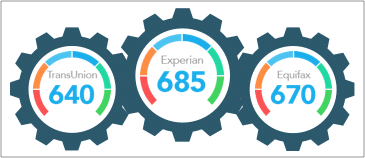Many people in their 30s neglect to make planning for retirement a financial priority. One reason why is because some believe that retirement is still a long way off, so they’ll have plenty of time later to save money for retirement.
An important step toward a financially secure future for 30-somethings is making retirement planning a priority. However, prioritizing retirement planning can be challenging for many 30-somethings as they balance numerous financial demands during this stage of life.
For example, while you might be earning a higher income than you were in your 20s, you may also face more financial responsibilities. For many 30-somethings, these include things such as a home mortgage, life insurance, car payments and the expenses involved in raising children.
Practice Percentage Saving
One of the best ways to prioritize retirement planning in your 30s is to devote a percentage of your monthly income to retirement savings. For example, you could sign up to participate in a 401(k) plan at work and have 10% of your monthly pay automatically transferred into your account. This may be especially smart if your employer matches your retirement plan contributions.
If you can’t afford to devote 10% of your income to retirement, that’s OK. You can start out with a lower percentage and raise it over time. For example, you could earmark a percentage of each raise you receive to retirement savings, slowly increasing your percentage of retirement contributions over the long term.
Consider John, who started contributing 5% of his salary to his 401(k) when he was 30 years old and making $40,000 annually. His yearly 401(k) contribution equaled $2,000. He gradually increased this as his income rose throughout his 30s so that when he turned 40, he was contributing 10% of his annual salary, which had risen to $60,000. This means his contribution was $6,000 a year — three times more than when he was 30 years old.
Take Advantage of the Rule of 72
Given your long-term investing time frame, your 30s are a good time to take advantage of an investing principle known as the Rule of 72. According to this mathematical formula, investment funds will approximately double in the number of years equal to 72 divided by the annual rate of return generated by the investment.
For example, if a retirement portfolio generated an annual return of 8%, it would double in about 9 years — 72 divided by 8. Put another way, delaying retirement saving for about a decade could cost you the opportunity to double your money during this time.
Let’s look at John again. At 35 years of age, he had grown his 401(k) to $50,000. If he never contributes another penny to his account, it would grow to approximately $100,000 by the time he turns 44; $200,000 by the time he turns 53; and $400,000 by the time he turns 62 if he earns an average annual return of 8%. If he keeps making contributions to his 401(k), it will grow even larger than this.
Prioritize Retirement Planning Now
If you’re in your 30s, commit now to make planning for retirement a top financial priority. Doing so could help you enjoy a financially secure retirement many years down the road.
Disclaimer: The Content is for informational purposes only, you should not construe any such information or other material as legal, tax, investment, financial, or other advice





